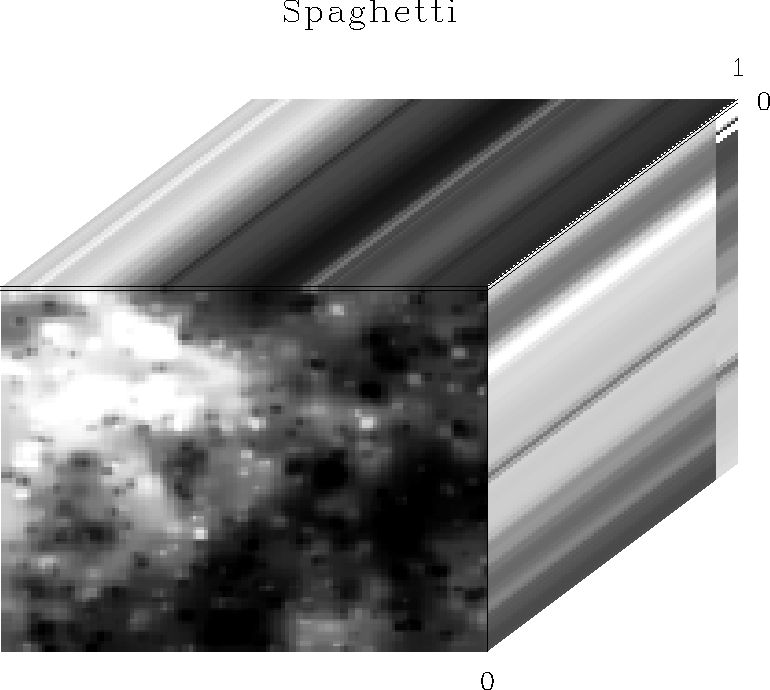![\begin{displaymath}
\left[
\begin{array}
{c}
{\partial \over \partial x} \ +\ p...
...al y} \ +\ p_y \,{\partial \over \partial t} \end{array}\right]\end{displaymath}](img33.gif)
In his book Three Dimensional Filtering1994, Claerbout suggests the filter
![\begin{displaymath}
\left[
\begin{array}
{c}
{\partial \over \partial x} \ +\ p...
...al y} \ +\ p_y \,{\partial \over \partial t} \end{array}\right]\end{displaymath}](img33.gif) |
(5) |
to destroy a ``family of dipping planes'' ![]() .
.
|
spaghetti
Figure 4 Synthetic data that corresponds to the sum of random Gaussian events but are constant with regard of x and y. The side panels can be annihilated by PE filters. The front panel cannot. |  |
The cross product approach described above extends Claerbout's original 2-D-filter pair by a third filter in the third plane. Figure 4 shows a rare case in which Claerbout's two annihilation filters would not suffice to detect a plane layer volume. The image volume is a set of identical (y,z)-planes. The (y,z)-plane is a superposition of random Gaussian functions. You may visualize the volume as a box full of parallel overcooked spaghetti. Claerbout's filter pair yields zero output when applied to the (x,y)- and (x,z)-plane and would lead to the incorrect conclusion that the image is a plane layer volume.
The third filter of the cross product expression (4) operates on the (y,z)-planes and would yield a nonzero output. Consequently, the cross product approach correctly detects that the volume is not a plane layer volume.